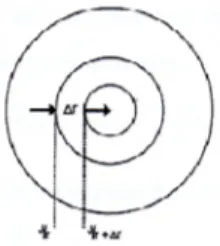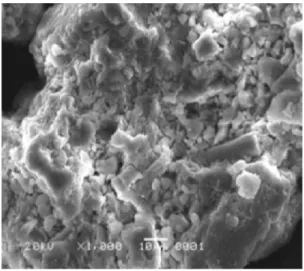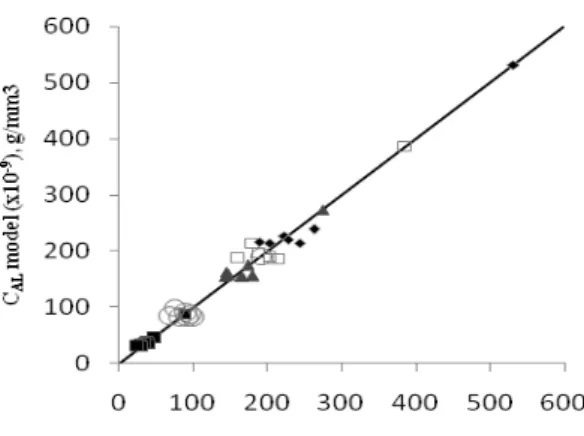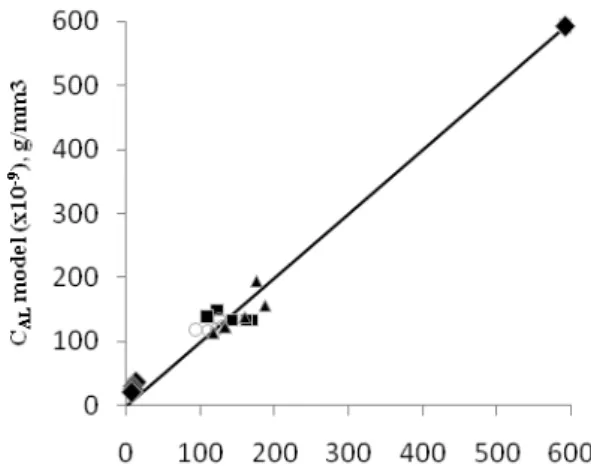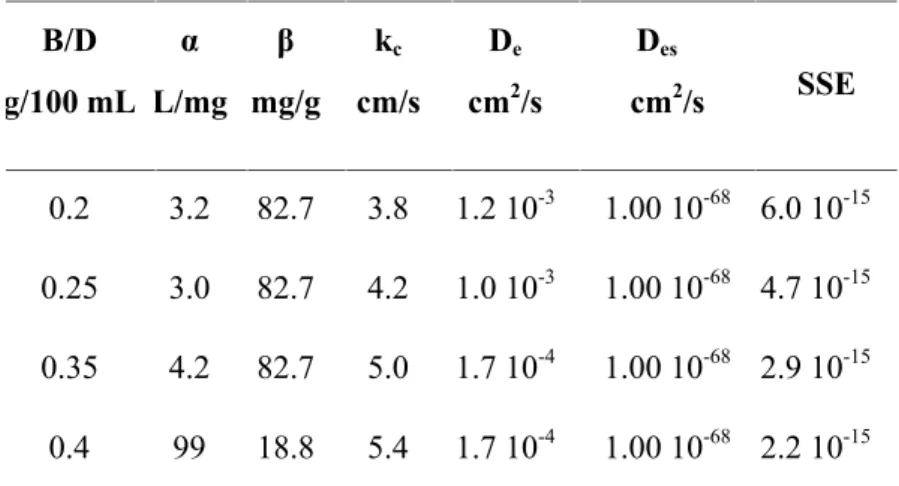Pusat Studi Ilmu Teknik
PANITIA SEMINAR NASIONAL
PERKEMBANGAN RISET DAN TEKNOLOGI DI BIDANG INDUSTRI KE-19
Pusat Studi Ilmu Teknik UGM Jl. Teknika Utara, Barek, Kampus UGM, Yogyakarta 55281
Perkembangan Riset dan Teknologi
di Bidang Industri Ke-19
SEMINAR NASIONAL
Perkembangan Riset dan Teknologi
di Bidang Industri Ke-19
ISBN: 978-979-95620-9-8
Kantor Pusat Fakultas Teknik UGM
Yogyakarta, 4 Juni 2013
Pusat Studi Ilmu Teknik
Jurusan Teknik Mesin dan Industri
Jurusan Teknik Kimia
Editor: 1. Dr. Ir. Aswati Mindaryani, MSc.
2. Prof. Dr. Ing. Ir. Harwin Saptoadi, MSE
3. Dr. Ir. Rini Dharmastiti, MSc
4. Ir. Suprihastuti SR, MSc.
5. Prof. Dr. Ir. Rochmadi, SU
6 . Dr. Ir. I Made Suardjaja, MSc, PhD
7. Dr. Ir. Hary Sulistyo, SU
8. Dr. Ir. Sarto, MSc
9. Dr. M. Noer Ilman, ST, MSc
10. Dr. M.K. Herliansyah, ST, MT
Prosiding Seminar Nasional
Perkembangan Riset dan Teknologi di Bidang Industri ke 19
© 2013, Jurusan Teknik Mesin dan Industri, Jurusan Teknik Kimia,Fakultas Teknik,
Pusat Studi Ilmu Teknik, Universitas Gadjah Mada – Yogyakarta
IISBN : 978-979-95620-9-8
Alamat : Pusat Studi Ilmu Teknik UGM
Jl. Teknika Utara, Barek, Kampus UGM, Yogyakarta 55281
Telpon : (0274) 565834, 902287
Fax
: (0274) 565834
KATA PENGANTAR
Seminar Nasional Perkembangan Riset dan Teknologi Di Bidang Industri yang ke 19
yang dilaksanakan tanggal 4 Juni 2013, bertempat di Kantor Pusat Fakultas Teknik UGM
merupakan seminar rutin yang diselenggarakan oleh Pusat Studi Ilmu Teknik (PSIT)
Universitas Gadjah Mada. Seminar ini terlaksana atas kerjasama antara PSIT UGM dengan
Jurusan Teknik Mesin dan Industri, dan dengan Jurusan Teknik Kimia, Fakultas Teknik
UGM. Seminar nasional ini merupakan forum diskusi dan tukar informasi bagi para peneliti,
praktisi di bidang industri dan diharapkan dapat menghasilkan interaksi yang sinergis antara
akademisi dan praktisi sehingga dapat mempercepat peningkatan laju perkembangan industri
nasional.
Dalam seminar ini telah disampaikan 39 makalah yang terbagi dalam sub topik :
Bahan Teknik dan Mekanika Bahan, Kendali Proses, Perpindahan Panas dan Massa, Teknik
Reaksi dan Teknik Pembakaran, Mekanika Fluida, Pengolahan Limbah Industri dan
Lingkungan, Teknik Industri.
Prosiding seminar ini diharapkan dapat memberikan informasi perkembangan yang
paling mutakhir dalam bidang riset dan teknologi di bidang industri di Indonesia. Panitia telah
berusaha semaksimal mungkin untuk menyusun semua makalah dalam bentuk prosiding yang
representatif, namun masukan dan kritik dari para pembaca masih sangat diharapkan.
Seminar ini dapat terlaksana dengan sukses berkat partisipasi dan bantuan dari
berbagai pihak. Panitia mengucapkan terima kasih kepada para pemakalah, para peserta, PT
Global Haditech dan serta semua pihak yang telah membantu penyelenggaraan acara seminar.
Yogyakarta, 5 Juli 2013
Panitia Seminar Nasional
DAFTAR ISI
Kata Pengantar
iii
Daftar Isi
v
BAHAN TEKNIK - MEKANIKA BAHAN
1
Karakteristik Proses Hidriding-Dehidriding Pada Paduan U-7Mo
Agoeng Kadarjono, Supardjo
BT/MB – 1
2
Perancangan Kekuatan Sirip Roket RX 320 Akibat Pengaruh Beban
Aerodinamik yang Terjadi
Agus Budi Djatmiko
BT/MB – 9
3
Perancangan Struktur Tabung Roket RX 450 LAPAN Akibat Pengaruh
Getaran Yang Terjadi
Agus Budi Djatmiko
BT/MB – 16
4
Springback Pada Pembentukan Plat Baja Dengan Air Vee Bending
Benidiktus Tulung Prayoga
BT/MB – 24
5
Analisis Konsumsi Energi Listrik pada PC-Base CNC Dengan Variasi
Parameter Pemesinan
Budi Basuki, Herian, Gesang Nugroho
BT/MB – 30
6
Pengaruh Nitrokarburising Terhadap Kekerasan Baja AISI 410
Edy Iryanto , Viktor Malau, Tjipto Sujitno
BT/MB – 36
7
Analisis Pengaruh Penggunaan Sistem Minimum Quantity Lubrication
(MQL) Dengan Variasi Fluida Lubricant Minyak Nabati Terhadap
Keausan Pahat.
Istyawan Priyahapsara, Herianto, Herliansyah
BT/MB – 42
8
Variasi Waktu Implantasi Ion Chrom untuk Meningkatkan Hardness
dan Menurunkan Corrosion Rate dalam Media Phosphat Baver Salin
Material Penyambung Tulang
Priyo Tri Iswanto, Tjipto Sujitno , Bangun Pribadi
BT/MB – 48
9
Pengaruh Perlakuan Panas T6 dengan Variasi Suhu Aging terhadap
Fatigue Crack Growth Rate Paduan Aluminium A356
Priyo Tri Iswanto, Muhammad Yusuf Kurniawan
BT/MB – 54
10 Peningkatan Katahanan Korosi Material Implant SS304 dalam
Media Phosphat Baver Salin dengan Electroplating Ni-Cr
Priyo Tri Iswanto, Soekrisno, Nani Mulyaningsih
BT/MB – 61
11 Pengaruh Temperatur Anil terhadap Ketangguhan dan Ketahanan
Korosi Paduan Fe-2,2Al-C
Ratna Kartikasari
BT/MB – 68
12 Analisis Distribusi Tegangan Pada Struktur Nosel Motor Roket RX-450
Akibat Beban Tekanan dan Temperatur
Setiadi
13 Karakterisasi Mekanis Lapisan Nickel, Hard Chrome dan Nickel-Hard
Chrome pada Permukaan Baja AISI 410
Viktor Malau, Soekrisno, Adityo Noor Setyo
BT/MB – 80
14 Studi Laju Korosi dan Kekerasan Baja AISI 1030 yang Diberi Lapisan
Nickel Electroplating dengan Variasi Konsentrasi Larutan NaCl dan
Lama Pelapisan
Viktor Malau, Nelson Seleman Luppa
BT/MB – 88
15 Distribusi Mesh Serbuk Duralumin pada Penggiling Bola Sebulung
Putar D200 Putaran Cepat
Wahyono Suprapto
BT/MB – 95
16 Pengembangan Chassis model Ladder Frame untuk Mobil Pick Up
Niaga Multiguna
Yusuf Kadang dan I Made Londen Batan
BT/MB – 102
KENDALI PROSES
1
Kehilangan Vitamin C pada Buah dan Sayuran Selama Proses
Pengeringan dan Pengolahan, Bagaimana Solusinya?
Suharwadji Sentana
KP – 1
MEKANIKA FLUIDA
1 Pengaruh Flow Ratio Terhadap Pressure Ratio pada LJGP Dengan Area
Ratio 0,65 dan Throat Ratio 4
Dandung Rudy Hartana, Daru Sugati, Indarto, Purnomo, Eswanto
MF – 1
2 Perancangan Generator Magnet Permanen Flux Aksial untuk Aplikasi
Turbin Angin Vertikal
F. Eko Wismo Winarto, Sugiyanto
MF – 6
3 Optimasi Perletakan Kompresor Pada Jaringan Perpipaan Gas
Joko Waluyo
MF - 12
4 Pengaruh Jarak Celah Annulus dan Tekanan Operasi terhadap
Kinerja Rotating Filter
Prajitno, Danni A.K.
MF – 19
PENGOLAHAN LIMBAH INDUSTRI DAN LINGKUNGAN
1
Pelepasan Terkendali Dan Pengembangan Minyak Kayumanis
Sebagai Pengawet Alami Pada Pengemas Aktif Berbasis Selulosa dan
Evaluasinya Pada Ikan Lemuru (Sardinella Longiceps)
Margaretha Tuti Susanti
PL – 1
2
Penurunan Kandungan Rhodamine B dalam Air Limbah Industri
Tekstil dengan Proses Elektrokoagulasi dan Fotokatalitik
Sutanto, Danang Widjajanto, dan Hidjan
PERPINDAHAN KALOR DAN MASSA
1
Mass Transfer Model for Basic Blue Adsorption onto Pillared
Bentonite Clay Using Langmuir Equilibrium and Taking into Account
Liquid and Surface Diffusion
Hadiatni Rita Priyantini, Wahyudi Budi Sediawan, Rochmadi and
Imam Prasetyo
PKM – 1
2
Evaluasi Teknis Separator Uap dan Pengaturan Temperatur Pada Mesin
Pengering kayu di Industri Pengolahan Kayu PT. Triowira Kalimantan.
Mamat
PKM – 9
3
Penggantian Purge gas Recovery unit (PGRU) berbasis Teknologi
Cryogenic menjadi berbasis Teknologi Membran di Pabrik Amoniak
Pusri IV
Muhammad Natsir Hakiki, Ferlyn Fachlevie, Yusman Arullah
PKM – 15
4
Evaluasi Unjuk Kerja Pengering Hasil Pertanian Bawang Merah
dengan Sistem Pemanfaatan Energi Terpadu Matahari dan Angin
Samsul Kamal
PKM – 20
TEKNIK INDUSTRI
1
Model Prediksi Kesuksesan Produk Dengan Pertimbangan Pengaruh
Kemudahan Inovasi
Ana Yunita Masura, Subagyo, dan Fitri Trapsilawati
TI – 1
2
Korelasi Variabel Competitive Priorities dengan Keunggulan Bersaing
Industri Di Provinsi Gorontalo
Iwan Inrawan Wiratmadja, Trifandi Lasalewo
TI – 7
3
Karakterisasi Jaringan Sosial Difusi Teknologi Gadget
Khairunnisa dan Bertha Maya Sopha
TI – 13
4
Pengukuran Brand dan Inovasi Untuk Prediksi Nilai Intangible
Pada Penentuan Harga Produk
Reza Bayu Kurniawan dan Subagyo
TI – 19
5
Peningkatan Efisiensi Pabrik Amoniak dan Urea di PT Pupuk
Indonesia (Persero)
Sigit Abdurrakhman
TI – 25
6
Pembuatan Perangkat Lunak Guna Otomatisasi Penggunaan Control
Chart
Wilhelmus Abisatya Pararta, dan Hari Agung Yuniarto
TI – 31
7
Pengembangan Framework dan Standard Operating Procedure (SOP)
Perencanaan Turnaround Maintenance Berbasis Project Management
Zoelverdi Yustian Putra dan Hari Agung Yuniarto
TEKNIK REAKSI DAN TEKNIK PEMBAKARAN
1
Pengaruh Suhu dan Kecepatan Pengaduk pada Reaksi Ozonolysis dan
Transestrerifikasi Minyak Goreng Bekas
Lieke Riadi, Lie Hwa, Edy Purwanto dan Alloysius Yuli Widianto
TR/TP – 1
2
Analisis Termal Tungku Untuk Proses Produksi Carbon Black di PT
Mocaf Indonesia Trenggalek
Mamat,Bambang Prihandoko
TR/TP – 7
3
Studi Paduan U-Mo Monolitik Sebagai Pengembangan Bahan Bakar
Dispersi Densitas uranium Tinggi Untuk Reaktor Riset
Supardjo
TR/TP – 13
4
Studi Kinetika Kalsinasi Zircon Oxychloride (ZOC)
Tundjung Indrati Y
TR/TP – 21
5
Kajian Kinetika Pelarutan Slurry Zirconiumhydroxide (ZOH)
PERPINDAHAN KALOR
DAN MASSA
Mass Transfer Model for Basic Blue Adsorption onto Pillared Bentonite Clay Using
Langmuir Equilibrium and Taking into Account Liquid and Surface Diffusion
Hadiatni Rita Priyantinia*, Wahyudi Budi Sediawana, Rochmadiaand Imam Prasetyoaa*Department of Chemical Engineering, University of Surabaya, Surabaya 60292, Indonesia aDepartment of Chemical Engineering, Gajah Mada University, Yogyakarta 55281, Indonesia
*Corresponding Author’s E-mail: rita_priantini@ubaya.ac.id
Abstract
Bentonite clay from Pacitan, East Java, was made using intercalation and pillarization method, using cationic surfactant HDTMA-Cl as intercalating agent and NaOH – AlCl3 mixture with OH/Al ratio was 0,8 as pillaring agent at 80oC. Furthermore, calcination was done at 500oC for 4 hours. Adsorption process was done at laboratory scale batch system with initial Basic Blue 41 dye concentration varied between 100 ppm, 200 ppm, 300 ppm, 400 ppm, and 500 ppm for adsorbent mass ratio was 0,1 g/L and adsorbent size of 100 mesh. Adsorbent mass ratio was varied 0,1 g/L; 0,2 g/L; 0,25 g/L; 0,35 g/L; and 0,4 g/L for initial dye concentration of 600 ppm. Adsorption equilibrium was analyzed using Langmuir equilibrium model, and kinetic model was developed with considering convection mass transfer at adsorbent surface and intra-particle dye diffusion. Mathematic model and experimental data was used to calculate dye convective mass transfer and effective diffusion coefficient using computer program. The result showed that Basic Blue 41 – pillarized bentonite clay equilibrium obeyed Langmuir equilibrium model. Developed kinetic model was relatively fitted to experimental data. Maximum dye removal was 97,947 %. Generally, Basic Blue 41 adsorption kinetic was controlled by film resistance at adsorbent surface and intra-particle diffusion resistance.
Keywords: Adsorption; Basic Blue; Bentonite Clay; Modeling; Pillarization
1. Introduction
Bentonite clay, which was composed of alumina-silicate, is a low price commodity, widely available, and considered to be an effective sorbent material having a high added value. Based on the mineral content, the clay can be divided into: smectite (montmorillonite), kaolinite, halloysite, chlorite and illite [Olphen et al., 1977]. Bentonite is a type of clay which has the ability to adsorb water and its cation exchange power much greater than the ordinary clay. A component of the dominant clay mineral in bentonite is montmorillonite. Montmorillonite has the chemical formula
[NaxAl(2-x)Mgx(Si4O10)(OH)2].(H2O)m.
Montmorillonite clay minerals are a group that has a good ability to adsorb both the metal and the organic molecules. It also has an ability to inflate and deflate (swelling) and an exchangeable cation [Pinnavaia, 1983]. Bentonite is a clay composed of alumina-silicate which consists of 3 layers, where a layer containing octahedral aluminum flanked between the other two layers containing tetrahedral silicate. This three layers form a sheet structure [Astrology, 2000].
Due to its large porosity, beside its potential as an adsorbent, bentonite clay is very suitable to be used as catalysts and ion exchange material. However, although bentonite clay is very useful in many areas of application, it has limitations in maintaining its shape, due to its nature of easy to swell. Clays can swell due to hydration, deflate and even the structure of the clay can be damaged by dehydration and heating. To prevent this deformation, the interlayer region should be supported by a stable pillar. The other purpose of such modification is to create a large pore volume. In addition, it was also addressed to increase its ability of maintaining the porosity of clay despite hydration and dehydration occur. This process is called pillarization [Robert et al., 1999].
Two main steps of the pillarization process were as follows, 1). Inserting a pillaring agent to the layer between the clay sheets, 2). Calcining the material to make the pillaring agent incorporated and tied into the solid sheets strongly. The so-called pillaring agent is any substance that can form the pillars on sheets of clay, so the clay becomes porous. While, the insertion of these substances into the space between the sheets (interlayer) without changing the structure of the sheet is called intercalation stage. Bentonite that has undergone a process of pillarization is called pillared bentonite clay [Robert
To form a stable pillared bentonite with permanent porosity, the process of heating (calcination)
needs a great consideration. The best temperature range for calcination is between 300-500oC [Barrer
et. al, 1978]. Pinnavia described that the calcination process at the temperature range makes the pillaring agent strongly bind to the bentonite clay sheets. This is indicated by the spectral data A1 MAS-NMS on smectite clays pillared with Al (Barrer et al, 1978). After experiencing pillarization, the pillared bentonite clay has expands vertically compared to prior pillarization, and can not return to the original form despite the dehydration happen [Robert et al., 1999].
Besides being able to expand vertically due to dehydration, other characteristics of pillared bentonite is having basal spacing at least 0.315 to 0.353 nm. The pillaring agent molecules are laterally in the area of intermelar which has porous characteristic. However, the basic criteria of pillared bentonite is having a good thermal and chemical stability and having a good distribution of the pillars in the intermelar region [Robert et al., 1999].
The aim of this research work is to develop a mass transfer model which is suitable for basic blue adsorption onto pillared bentonite clay by taking into account the intra particle concentration gradient and applying linier equilibrium equation. The suitability of the model was examined by using the data of laboratory experiments and analyzed quantitatively.
2. Theory and Experimental 2.1 Modeling
Since the pillared bentonite clay particles used in this research work is sphere-like shape, it was considered appropiate to assume the shape of pillared bentonite to be spherical shape, then the mass transfer model was developed using volume element mass balance for sphere:
Figure 1. Volume element mass balance
C C t r C r r C D r C r r C D C C t r r r r r C r es D r r r C r e D r r C r es D r r C r e D acc m out m in m ads es e ads 2 2 2 2 2 2 2 4 2 . 4 . 2 . 4 . 2 . 4 . 2 . 4 . (1) If qCadsC then t q r C r r C D r C r r C De es 2 2 2 2 2 2 (2) With C C C C C q ads ads 0 ) ( 2 2 q C q C C C C q Cq ads (3)
2 4 2 ) ( ) ( q q q C ads ads (4)
Equation (2) is the general form of differential equation for adsorption of solute from liquid phase to solid sphere which was taken into account the intra-particle concentration gradient. Differential equation (2) was solved using finite difference approximation which expressed as:
1 , , ,1 , ' . 1 , , . ' 2 ,1 , ' . 1 ,1 . 1 , . 2 ,1 . 1 j i q j i q j i C M i i j i C M j i C M i i j i C M i i j i C M j i C M i i (5) t e D r M . 2 and t es D r M . 2 ' (6)
For a certain position in spherical shape, it is necessary to modify the general finite difference equation as follow:
At the center of the sphere (i = 0)
1 , 0 , 0 , 0 ,1 , 0 ,1 j q j q j C j C es D j C j C e D (7) At solid surface (i = N) r t qN j j N C AL C R c k r j N C j N C es D r j N C j N C e D j N q , , 2 4 . 1 2 ,1 , 2 ,1 , ' 1 , (8)
Solute concentration in the liquid phase (Cf) was calculated using the equation:
R dr q r V N f C j f C 0 2 4 0 , 1 , (9)
There are several methods available to solve the finite difference approximation such as explicit (forward), implicit (backward) and Crank-Nicolson [Wahyudi Budi Sediawan and Agus Prasetya, 1997]. In this research work, the finite difference approximation equation was solved using explicit method. The suitability of the model was examined by evaluating the sum of squares of errors (SSE) which was expressed as:
SSE = Σ (Cmodel- Cexperimental)2 (10)
2.2 Experiment
Bentonite clay, which was originated from Pacitan, East Java – Indonesia, was treated following intercalation and pillarization method. The measurement of some physical properties such as density, total porosity, macro and micro pore size and surface area BET (Brunauer, Emmet, Teller) was conducted afterward. Cationic surfactant (HDTMA-Cl) was used in intercalation while sodium
hydroxide and AlCl3 was used during pillarization process. The C.I. Basic Blue 41 under the trade
name T/A Blue RGN-T 200% was used as adsorbate.
Intercalation is performed by preparing bentonite suspensions in which the ratio of bentonite/water = 1 gram/50 ml was applied and was diluted using distillate water to 1000 ml of total mixing volume. Surfactant was then added to the bentonite suspension and was stirred for 5 hours at a temperature of
80 oC. The weight ratio of surfactant/bentonite used was 1: 25. After being stirred for 5 minutes the
solution was cooled briefly and was separated from the filtrate by a vacuum pump and then was dried
in a laboratory scale oven at 100oC for 1 hour.
Pillaring agent was made by mixing NaOH and AlCl3, in which the ratio of OH/Al was 0.8, at a
temperature of 80 oC and was stirred until homogeneous mixing was reached. Intercalated bentonite
suspensions was stirred and heated until the temperature reaches 80oC. After that pillaring agent, ratio
of Al/bentonite = 10 mmol/gram, was added gradually to a suspension of intercalated bentonite and
stirred for 5 hours at 80 oC. After 5 hours, bentonite was separated from the filtrate using a vacuum
pump and dried in an oven at 100 °C for 1 hour. Finally the bentonite was calcined at 500 oC in a
physical and chemical characterization. Pore radius, pore surface area and pore volume was analyzed using NOVA Data Analysis Package Ver. 2.00, Quantachrome Corporation.
Adsorption test of Al pillared bentonite powder was performed using an artificial waste which was prepared by dissolve a basic blue dye in 100 ml distilled water. Experiments were conducted by varying the intial dye concentration and bentonite weight / solution volume ratio. During the batch experiment, the dye concentration changes in liquid phase was detected by taking samples and measure the concentration using an UV spectrophotometer 600 nm.
3. Results and Discussion
The scanning electron microscope (SEM) image of original and pillared bentonite was shown on Figure 2 and Figure 3, respectively. The effect of the pillarization treatment was shown by the different surface appearance of the two images. The pillared bentonite image showed clearly the formation of basal spacing and area of intermelar where the pillaring agent molecules are laterally distributed.
The result of the composition analysis of the original and pillared bentonite was shown on Table 1. It could be seen from the table that the mass fraction of aluminum oxide increased to some significant extent, i.e. from 18.23 %w to 54.16 %w. The increasing aluminum oxide content is due to the
infiltration of pillaring agent AlCl3. Then, it indicated that the pillarization process has strongly
incorporated and tied the pillaring agent into the bentonite solid sheets. While the mass fraction of some components including silicon dioxide, calcium oxide and ferro oxide decreased as consequent of increasing the aluminum oxide content.
Larger pore volume was detected on pillared bentonite which reflects increasing the surface area after pillarization. Accumulated pore volume and pore surface area were presented on Figure 4 and Figure 5, respectively. The figures showed clearly that the pillarization increased pore volume and pore surface, significantly. There has been a tremendous shift of pore size distribution dominates, from 0-20 Angstroms for the original bentonite to 20-500 Angstrom for pillared bentonite.
Figure 6 and Figure 7 displays basic blue concentration in the liquid phase by comparing the experimental data to the calculated value from the model for variations in the initial concentration. While Figure 8 and Figure 9 displays the same thing for variations in the ratio of mass of bentonite to volume of solution.
The parameters associated with the calculation of dye concentration, which include the distribution constant, external mass transfer coefficient and diffusivity coefficient, generated during solving the finite difference approximation were presented in Table 2 and Table 3.
Figure 2: Scanning electron microscope image of
0 10 20 30 0 200 400 Po re V ol um e (c c / A ng st ro m / 0. 00 1 g)
Pore Radius (Angstrom)
Table 1: Composition of Original and Pillared Bentonite Component bentonite , %wOriginal bentonite , %wPilarred
Na2O 0,05 0.54 MgO 3.70 2.32 Al2O3 18.23 54.16 SiO2 68.69 40.91 CaO 3.90 0.06 TiO2 0.59 0.16 FeO 4.83 1.85
Analysis methode : SNI 0449-2010
Figure 4: Accumulated pore volume versus pore
radius of original and pillared bentonite clay.
0 4000 8000 12000 16000 20000 0 200 400 Po re A re a (m 2/ An gs tr om / 0. 00 1 g)
Pore Radius (Angstrom)
Figure 5: Accumulated pore surface area
versus pore radius of original and pillared bentonite clay.
Figure 6: Basic blue concentration ratio in
liquid phase versus time. The experimental data symbol for related initial concentration: 100 ppm, 200 ppm, 300 ppm, 400 ppn, 500 ppm. The curved line expressed the calculated result from the model. The mass ratio of
Figure 7: Basic blue concentration in liquid
phase, model versus experimental data. The experimental data symbol for related initial concentration: 100 ppm, 200 ppm, 300 ppm, 400 ppm, 500 ppm. The mass ratio of bentonite/solution: 0.10 g/100 ml.
Original
Pillared Pillared
The distribution constants obtained from the experiments were in the range of 0.9 10-5- 1.9 10-4
g/ml. Distribution constants for dye adsorption by bentonite was apparently not affected by the dye concentration in solution, while an increase in the ratio of bentonite/solution slightly lowering the distribution constant value as was shown on Table 2 and Table 3.
The external mass transfer coefficient (kc) varies in the range of 3.0 – 5.5 cm/s. It wasn’t found a
clear correlation between the external mass transfer coefficient and the initial dye concentration as well as the bentonite/solution ratio.
Figure 8: Basic blue concentration ratio in
liquid phase versus time. The experimental data symbol for related bentonite/solution ratio:
0.20 g/100 ml, cc0.25 g/100 ml, 0.35
g/100 ml, 0.40 g/100 ml. The curved line expressed the calculated result from the model. The initial concentration of basic blue was 600 ppm.
Figure 9: Basic blue concentration in liquid
phase, model versus experimental data. The experimental data symol for related
bentonite/solution ratio: ccc0.20 g/100 ml,
0.25 g/100 ml, 0.35 g/100 ml, 0.40 g/100 ml. The curved line expressed the calculated result from the model. The initial concentration of basic blue was 600 ppm.
Table 2: Distribution constant, external mass transfer coefficient, diffusivity coefficient and SSE at
various initial dye concentration for bentonite/dye solution ratio 0.1g/100 ml
Cf0 ppm L/mgα mg/gβ cm/skc cmD2e/s cmDes2/s SSE 100 2.5 56.35 5.5 6.6 10-4 1.00 10-68 6.7 10-17 200 2.5 82.70 3.5 1.0 10-3 1.00 10-68 1.5 10-15 300 2.5 143.0 4.0 8.0 10-4 1.00 10-68 1.4 10-15 400 2.5 104.0 3.4 1.1 10-3 1.00 10-68 3.8 10-15 500 2.5 75.00 3.0 1.0 10-3 1.00 10-68 2.3 10-15
Table 3: Distribution constant, external mass transfer coefficient, diffusivity coefficient and SSE at
various bentonite/dye solution ratio for initial dye concentration 600 ppm
B/D g/100 mL α L/mg β mg/g kc cm/s De cm2/s Des cm2/s SSE 0.2 3.2 82.7 3.8 1.2 10-3 1.00 10-68 6.0 10-15 0.25 3.0 82.7 4.2 1.0 10-3 1.00 10-68 4.7 10-15 0.35 4.2 82.7 5.0 1.7 10-4 1.00 10-68 2.9 10-15 0.4 99 18.8 5.4 1.7 10-4 1.00 10-68 2.2 10-15
Varying the initial concentration of dye at constant bentonite/solution ratio and varying the bentonite/solution ratio at constant initial dye concentration mean varying the dye concentration during the batch adsorption process.
While value of the external mass transfer coefficient calculated from the same experimental data source vary, as shown in Table 2 and Table 3. It mean that a change of dye concentration might be result in a change of an eddy diffusivity and/or the thickness of liquid phase interface film, since an external mass transfer coefficient depend on both the eddy diffusivity and the thickness of liquid phase interface film.
The sum of squares of errors which was used to examine the suitability of the developed model was presented in Table 2 for initial dye concentration variation and in Table 3 for bentonite/solution ratio
variation. The value were in the range of 6.7 10-17- 6.0 10-15. This low value of SSE indicates that the
developed mass transfer model is suitable for basic blue adsorption onto pillared bentonite clay.
4. Conclusion
The effect of the bentonite pillarization was shown by the different surface appearance which was found on the scanning electron microscope images. The formation of basal spacing and area of intermelar was identified in the pillared bentonite.
After pillarization, the mass fraction of aluminum oxide increased to some significant extent, i.e. from 18.23 %w to 54.16 %w. The increasing aluminum oxide content is due to the infiltration of
pillaring agent AlCl3. It indicated that the pillarization process has strongly incorporated and tied the
pillaring agent into the bentonite solid sheets.
Larger pore volume was indicated by pillared bentonite which reflects increasing the surface area after pillarization. There has been a tremendous shift of pore size distribution dominates, from 0-20 Angstroms for the original bentonite to 20-500 Angstrom for pillared bentonite.
This research work has proven that the developed mass transfer model are suitable for basic blue adsorption onto pillared bentonite clay.
Acknowledgements
The authors wish to thank The Technological And Professional Skills Development Sector Project (TPSDP) – ADB Loan No: 1792 – INO for providing the scholarship. Financial support from The University of Surabaya is gratefully acknowledged.
Nomenclature
C* solut concentration in liquid phase interface (mol/ml)
Ci,j solut concentration at position i at time j
Cµ solut concentration in solid (g/g solid)
De pore diffusivity coefficient (cm2/s)
Des surface diffusivity coefficient (cm2/s)
kc external mass transfer coefficient (cm/s)
min rate of mass inflow (mol/s)
mout rate of mass outflow (mol/s)
macc rate of mass accumulated (mol/s)
N total number of particle
R sphere radius (cm)
r distance from the sphere center in radial direction (cm)
t time (s)
Greek letters
ε particle porosity
ρads adsorbent density (g/ml)
α konstanta Langmuir (L/mg)
β konstanta Langmuir (mg/g)
References
1) Aksu, Z., Tatli, A. I., & Tunc, O. (2008). A comparative adsortion/biosorption study of Acid Blue 161: Effect of temperature on equilibrium and kinetic parameters. Chemical Engineering
Journal 142, 23-29.
2) Astrology (2000). Clay-Catalyzed RNA Polymerization Activity, New York.
3) Barrer, R.M., F.R.S. (1978). Zeolites and Clay Minerals as Sorbents and Molecular Sieves, Academic Press, London.
4) Choong, T. S., Chuah, T., Idris, A., Lai, Y., & Quek, S. (2005). A Film Pore Surface Concentration Dependent Model for Adsorption of Dye onto Activated Carbon. Jurnal
Teknologi, Universitas Teknologi Malaysia, 47-66
5) Do, D. D. (1998). Adsorption Analysis: Equilibria and Kinetics . London: Imperial College Press.
6) Olphen, H.V. (1977). An Introduction to Clay Colloid Chemistry for Clay Technologist,
Geologist and Soil Scientist, 2ndEdition, A. Willey-Interscience-Publication, Canada.
7) Pinnavia, T.J. (1983). Intercalated Clays Catalyst. Science 220, 4595: 365-371.
8) Ramakrishna, K., & Viraraghavan. (1997). Dye Removal Using Low Cost Adsorbents. Water
Science Technology, 36, 189-196
9) Robert A. Schoonheydt, Tom Pinnavaia, Gerhard Lagaly and Nick Gangas (1999). Pillared Clays and Pillared Layered Soilds.
10) Wahyudi Budi Sediawan and AgusPrasetya (1997). Pemodelan Matematis dan Penyelesaian Numeris Dalam Teknik Kimia. Penerbit ANDI, Yogyakarta.
11) Walker, G. M., & Weatherley, L. R. (1999). Kinetics of acid dye adsorption on GAC. Water
Research Vol. 33 No. 8, 1895-1899.
12) Walker, G., Hansen, L., Hanna, J., & Allen, S. (2003). Kinetics of a Reactive Dye Adsorption onto Dolomitic Sorbents. Water Research, 2081-2089.
13) Wang, S., & Li, H. (2005). Kinetic Modelling and Mechanism of Dye Adsorption on Unburned Carbon. Elsevier, 308-314.
